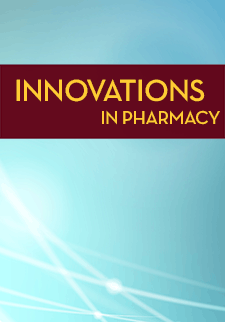Development of a Continuous Glucose Monitoring Service by Clinical Pharmacists in a Medically Underserved Population
Sara Lingow
St. Louis College of Pharmacy at University of Health Sciences & Pharmacy
Kacie Kinnikin
St. Louis College of Pharmacy at the University of Health Sciences & Pharmacy in St. Louis
Justinne Guyton
St. Louis College of Pharmacy at the University of Health Sciences & Pharmacy in St. Louis
DOI: https://doi.org/10.24926/iip.v15i1.5906
Keywords: Continuous Glucose Monitor, Diabetes Mellitus, Pharmacist
Abstract
Background: Continuous glucose monitoring (CGM) is an evolving technology that provides a wealth of information to aid in managing diabetes. Professional CGM (ProCGM) is recommended when personal CGM is not desired or available. Patients in medically underserved areas may have limited access to personal CGM devices, thus ProCGM devices can be used for short-term monitoring and medication adjustment. Clinical pharmacists are well-positioned to help set up and establish personal and professional CGM management services.
Objectives: To determine the effect of ProCGM in patients with persistently uncontrolled type 2 diabetes in a medically underserved population (MUP).
Methods: Pre-post intervention analysis of a single cohort of patients in a public health center. Patients with persistently uncontrolled (A1c > 9%) and taking at least one daily dose of insulin were included. Included participants wore a ProCGM sensor and met with the clinical pharmacist at least once for ProCGM data interpretation and education. The primary analysis evaluated patients who achieved an A1c <9% 1-6 months after intervention. The change in A1c was also evaluated. Participants completed a pre- and post-survey about their experience.
Results: Twenty-two patients were included in the final analysis. Ten patients achieved an A1c <9% (45%). The mean A1c pre- and post-ProCGM was 11.0% and 9.8% respectively, with a decrease of -1.2% (p=0.055) overall and a decrease of -1.7% for patients who wore the sensor for at least 10 days (p=0.012; n=15). Using the CGM data 91% of participants had a change to their medication regimen and 45% achieved an A1c <9%. Six participants experienced hypoglycemia per the CGM report, but only two were aware of it. After reviewing their glucose report with the pharmacist, 95% of the respondents agreed or strongly agreed to feeling more knowledgeable about blood sugar patterns after reviewing the report with a pharmacist.
Conclusion: Almost half of the patients in the study achieved an A1c <9%. This study demonstrated glycemic benefit in patients in a MUP who wore a ProCGM for at least 10 days and met with a clinical pharmacist. Data from ProCGM enabled patients to better understand glucose patterns in those with persistently uncontrolled type 2 diabetes.



